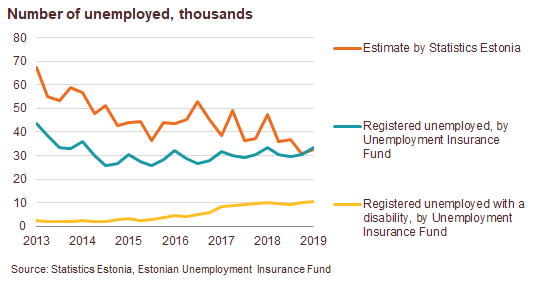 New record
New record
According to Statistics Estonia, in the 3rd quarter, the unemployment rate decreased even further to a record-low 3.9%. The estimated number of the employed reached 677,000, the highest number since at least the re-independence (earlier data is not available). Labour market is even tighter than during the last economic boom in 2006-2008 as the working-age population has shrunk by around 60,000 persons since then.
The number of the employed rose by around 11,000 persons and the number of the unemployed declined by 9,000 persons compared to the 3rd quarter last year. Employment grew among the full-time employees in the services sector in Tallinn.
Statistics Estonia’s unemployment rate seems a bit too low
Statistics Estonia’s data on the number of the unemployed seems under-estimated as the number of the officially registered employed exceeds Statistics Estonia data by around 4,000 persons in the 3rd quarter and all of the unemployed are not officially registered. Statistics Estonia commented that not everyone in the official registry of the unemployed could and wanted to work. Statistics Estonia’s figures are based on a survey of 5,000 persons every quarter while the Unemployment Insurance Fund has data on all the unemployed who have registered with them.

According to the Unemployment Insurance Fund, the number of the registered unemployed has been on the rise since May this year. The number of the registered unemployed grew by around 2,000 in a year in the 3rd quarter. The reason behind an increase in unemployment has not been the work ability reform like during previous years. The registered unemployment rate has increased mostly among those in good health (and not among those with a disability). Half of the 2,000 persons who had become unemployed recently had no concrete profession. The number of the unemployed construction workers and mechanics rose as well.
The situation in the labour market is expected to change
Economic growth is expected to ease next year, so demand for additional labour should weaken, especially in the exporting industries that are hit by low demand. Due to a less tight labour market, the average gross wage growth is expected to ease from 7.5% in 2019 to 6.5% in 2020 and 5.5% in 2021.
















